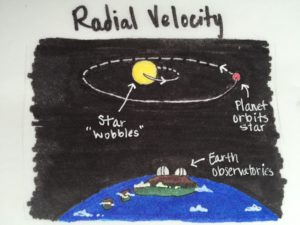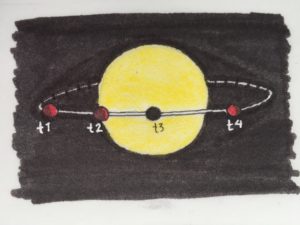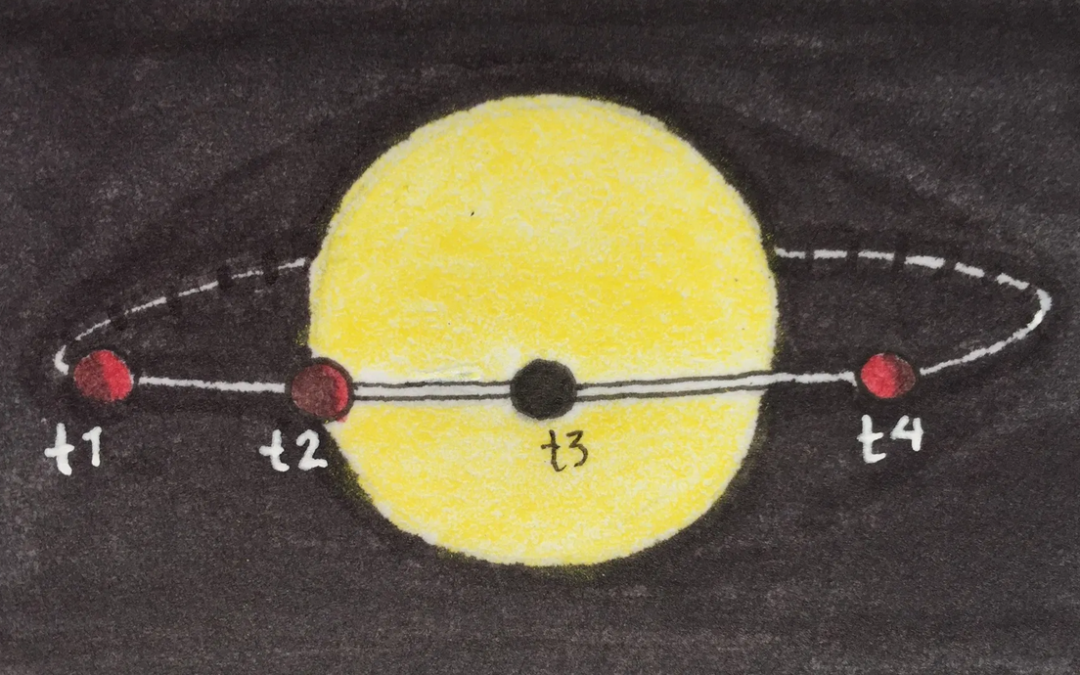Exoplanets are illusive objects. They are difficult to detect using even the most powerful telescopes because they are dim and cool relative to objects such as galaxies and stars, according to Dr. Daniel Apai, principal investigator for Project EOS. Only in the early 1990s did humanity discover evidence that planets exist outside of our solar system. Since then, two decades of research and technological development have revealed incredible insights to the fantastic worlds that exist within the Milky Way Galaxy, but astronomers are itching to learn more.
Radial velocity
The first exoplanet discovered around a main sequence star was found using a technique called radial velocity. Astronomers observed a star (52 Pegasi) in the constellation Pegasus and noticed it was wobbling slightly. This wobbling motion suggested that a very massive planet was orbiting the star and pulling on it due to the force of gravity.

As a planet orbits a star, the force of gravity causes the star to move. This movement is then detected by observatories on Earth, signaling that a planet is present. (Illustration by Mikayla Mace)
This technique uncovered hundreds of exoplanets in our galactic neighborhood and it is still used today. But because of the nature of the radial velocity method, the kinds of planets that can be detected are limited, resulting in a skewed understanding of the galaxy’s planet population. Radial velocity is most sensitive to planets that are very massive and close to their parent star. This is because large planets that are very close to their star and are very massive have a stronger gravitational interaction with that star. Interestingly, this technique isn’t as reliable for very young stars because the amount that it’s wobbling could be less than the variation of the bubbling surface of the star by nuclear fusion.
Today, radial velocity is often used to confirm the presence of planets detected using other methods. But between the years 1995 and 2009, hundreds of exoplanets were found using this technique.
Transit method
In 2009, when the Kepler Space Telescope began operations, the transit method became the most efficient way to hunt for planets. The transit method works by measuring starlight for a period of time and looking for regularly occurring dimming caused by planets orbiting the star and blocking light as it passes between the star and the Earth.

The transit method. At time 1 (t1) the star is at full brightness. As the planet begins to cross in front of the star (t2), it starts to dim. At t3, the star is at it’s dimmest, and the planet is blocking the most light. At t4, the planet is now past the star, and the star is once again at full brightness. This process repeats itself. (Illustration by Mikayla Mace)
The Kepler Space Telescope has found thousands of planets using this technique, but it has only been looking at a tiny fraction of the sky. Despite this, there are currently 2327 confirmed planets, according to NASA.
While the transit method is an efficient way to detect planets, it doesn’t really tell astronomers much about the planet’s characteristics. However, the clues it provides allows inferences to be drawn. For example, knowing of the distance from the star can determine if it’s in the habitable zone.
Transits combined with radial velocity data can be used to determine the density of planets. Radial velocity provides information on mass, and if astronomers know the mass and the size of the planet, they can determine the density, according to Apai. A planet that has a high density could be mostly composed of iron, a lower density could signal an abundance of water.
While these are inferences that can be made using these indirect methods, what astronomers are striving for is to directly image planets.
Direct imaging
Directly imaging planets is the most ideal method. Direct imaging reveals the most about an exoplanet’s composition because astronomers can actually collect light from the planet (instead of a star’s movement, or diminishing starlight).
Astronomers can determine the composition of the atmosphere and estimate the temperature. These pieces of information interests Project EOS because they are critical in the search for life.
Atmospheres of exoplanets are complex and very hard to tease out of the data collected. However, they’re important: “With every planet outside of the solar system, every photon passes through the atmosphere of that object so we can’t really pretend to understand exoplanets without some knowledge of the atmosphere,” Barman said.
By observing the brightness of light at different intensities, astronomers can determine the composition of atmospheres. Oxygen and methane are two prominent signatures of life. However, seeing the presence of these compounds alone doesn’t guarantee life. Further investigation is needed.
However, this method is also the most difficult to use, and without the other methods to confirm exoplanets found using direct imaging, we would not have the abundance of data that we have today.
The future
There are multiple techniques that planet hunters use, but they can only provide a limited piece of the puzzle. Through finely tuning theories of how planets form and advancing technology, astronomers can continue to understand the mysterious nature of planets in the galaxy, bringing us one step closer to understanding life in the cosmos.

